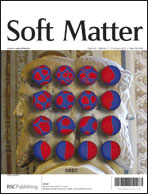Development of novel self-assembled poly(3-acrylamidophenylboronic acid)/poly(2-lactobionamidoethyl methacrylate) hybrid nanoparticles for improving nasal adsorption of insulin†
Abstract
It is well-known that the phenylboronic acid derivatives have chemical interactions with sugars. Hence, stable


 Please wait while we load your content...
Please wait while we load your content...